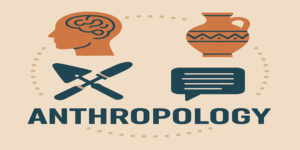The field of Information Systems and Technology (IS/IT) plays a crucial role in shaping how modern organisations operate, compete, and innovate. As businesses increasingly depend on data-driven decision-making, IS/IT provides the infrastructure and analytical tools required to process information efficiently. Within this broad discipline, two key study areas stand out: Management Information Systems (MIS) and Business Analytics (BA). These domains not only influence organisational efficiency but also underpin strategic decision-making in an era of rapid technological change.
This article provides an overview of these major study topics, drawing on academic literature, textbooks, and professional practice to explain their relevance and applications.
Information Systems and Technology
Information Systems (IS) refer to organised combinations of people, processes, hardware, software, and networks that collect, process, store, and distribute information to support decision-making and control within organisations (Laudon & Laudon, 2022). In contrast, Information Technology (IT) focuses more narrowly on the hardware and software components that enable such systems. Together, IS/IT forms the backbone of organisational infrastructure, supporting everything from day-to-day operations to high-level strategic initiatives.
IS/IT covers diverse areas such as databases, networking, cybersecurity, decision support systems, and enterprise applications. For instance, Enterprise Resource Planning (ERP) systems integrate various business processes (such as finance, HR, and supply chain) into a unified platform, enabling efficiency and transparency (Stair & Reynolds, 2021). The study of IS/IT therefore bridges both technical and managerial perspectives, making it essential for students and professionals in business and technology disciplines alike.
Two distinct fields of Information Systems and Technology are:
1.0 Management Information Systems
Management Information Systems (MIS) focus specifically on the use of IT to support business operations, management, and decision-making. MIS can be described as computer-based systems that provide managers with the information needed to plan, control, and make informed decisions (O’Brien & Marakas, 2019).
The role of MIS can be broken into three levels:
- Operational Support – automating routine processes such as payroll, inventory tracking, and sales reporting.
- Tactical Decision Support – providing mid-level managers with structured information to monitor performance.
- Strategic Planning – enabling senior executives to analyse long-term trends and align IT systems with business objectives.
For example, a retailer such as Tesco uses MIS to track consumer purchasing patterns, optimise stock levels, and enhance supply chain coordination (Rahman et al., 2025).
MIS is often integrated with other Decision Support Systems (DSS) and Knowledge Management Systems (KMS). With the rise of cloud computing and artificial intelligence (AI), MIS are evolving to deliver more real-time, predictive insights (Saremi, 2025).
2.0 Business Analytics
Business Analytics (BA) represents another critical area of IS/IT, focusing on the systematic exploration of data to generate insights for decision-making. BA is often categorised into three types (Evans, 2016):
- Descriptive Analytics – summarising past data to understand historical patterns.
- Predictive Analytics – using statistical and machine learning models to forecast future outcomes.
- Prescriptive Analytics – recommending optimal actions based on predictive insights.
Techniques within BA include data mining, machine learning, statistical modelling, and optimisation. For instance, airlines such as British Airways employ predictive analytics to forecast demand, adjust ticket pricing, and optimise flight schedules (Habib et al., 2025).
The rise of big data has expanded the scope of BA, enabling organisations to process massive datasets from sources such as social media, IoT sensors, and customer transactions. However, effective BA requires not only technical expertise but also business acumen, as insights must be translated into practical strategies (Pettersson & Rooth, 2025).
Integrating MIS and Business Analytics
While MIS and BA are distinct study areas, they are increasingly interconnected. MIS provides the infrastructure and databases that capture and store information, whereas BA extracts insights and predictive patterns from this data. Together, they enable evidence-based decision-making.
For example, in supply chain management, MIS systems track inventory levels and logistics, while BA models optimise delivery routes and forecast demand variability (John et al., 2025). Similarly, in healthcare, MIS stores patient records, and BA helps identify risk factors for diseases, improving clinical decision-making (Shojaei et al., 2025).
This integration underscores the importance of cross-disciplinary learning, where students of IS/IT are encouraged to develop both technical and analytical competencies.
Challenges and Future Directions
Despite their benefits, MIS and BA face several challenges:
- Data Quality and Integration – Organisations often struggle with fragmented data sources and inconsistent formats.
- Privacy and Security – With stricter regulations such as GDPR, ensuring ethical use of data is critical (Hang et al., 2025).
- Skills Gap – There is a growing demand for professionals who can bridge the gap between technical expertise and business insight.
Emerging technologies such as artificial intelligence, blockchain, and quantum computing are likely to redefine the field further. Scholars argue that future MIS will need to be more adaptive, decentralised, and intelligent, while BA will increasingly leverage real-time analytics and explainable AI (Diaz et al., 2025).
The study of Information Systems and Technology encompasses multiple dimensions, but Management Information Systems and Business Analytics are two of the most critical areas shaping organisational success today. MIS ensures that organisations can capture and manage data effectively, while BA transforms this data into actionable insights. Together, they contribute to efficiency, innovation, and competitive advantage.
As organisations confront the challenges of big data, cybersecurity, and digital transformation, the demand for expertise in MIS and BA will only intensify. For students and professionals, mastering these domains not only provides practical skills but also fosters a deeper understanding of how technology drives business value.
References
Diaz, R., Tariq, S., Luna, E., Bruin, X. & Martrat, J. (2025) A survey on 5G private and B5G network threats and safeguarding AI-based security mechanisms through the layered analysis. Computer Networks. [Available at: https://www.sciencedirect.com/science/article/pii/S1389128625005614].
Evans, J.R. (2016) Business Analytics: Methods, Models, and Decisions. 2nd ed. Pearson: Harlow.
Habib, M.A., Mahmood, A., Ahmad, M. & Baig, S.A. (2025) Barriers to Adoption Industry 4.0 in Textile Sector: Analysing Challenges in Transitioning to Smart Manufacturing with ISM and MICMAC. IEEE Access. [Available at: https://ieeexplore.ieee.org/document/11129254].
Hang, F., Xie, L., Zhang, Z., Guo, W. & Li, H. (2025) Overview of Privacy Protection Based on Joint Learning in Power Industry Big Data Analysis. River Publishers. [Available at: https://journals.riverpublishers.com/index.php/DGAEJ/article/download/17465/14015].
John, R., Rahman, M. & Garg, A. (2025) Technology intelligence framework for smart reverse logistics and sustainability: a systematic literature review. OPSEARCH, Springer. [Available at: https://link.springer.com/article/10.1007/s12597-025-00991-1].
Laudon, K.C. & Laudon, J.P. (2022) Management Information Systems: Managing the Digital Firm. 17th ed. Pearson: Harlow.
O’Brien, J.A. & Marakas, G.M. (2019) Management Information Systems. 11th ed. McGraw-Hill Education: New York.
Pettersson Fors, H. & Rooth, L. (2025) From Data to Value: How BI is Used in an Organisation that has Successfully Implemented BI. University of Gothenburg. [Available at: https://gupea.ub.gu.se/handle/2077/89465].
Saremi, S. (2025) The Strategic Role of Information Systems in Modern Business: Empowering Decision-Making and Sustaining Competitive Advantage. In: Engineering Management and Information Technology. Springer. [Available at: https://link.springer.com/chapter/10.1007/978-3-032-04228-6_6].
Shojaei, P., Farzadnia, R. & Mirghaderi, S.H. (2025) Implementation of circularity in food supply chain based on big data techniques using Einstein’s fuzzy methods. Scientific Reports, Nature. [Available at: https://www.nature.com/articles/s41598-025-13780-z].
Stair, R. & Reynolds, G. (2021) Principles of Information Systems. 13th ed. Cengage Learning: Boston.









